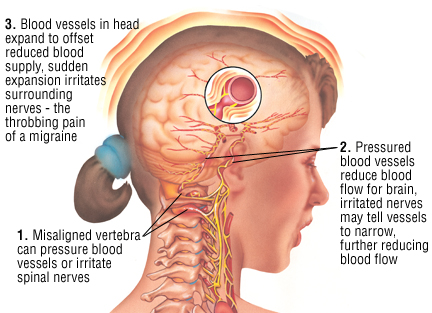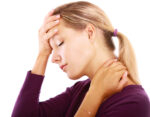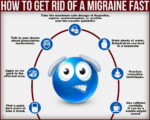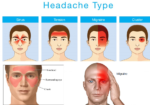Migraine triggers are specific factors or events that can lead to the onset of a migraine headache in individuals who are prone to them. It’s important to note that not everyone with migraines has the same triggers, and triggers can vary widely from person to person. Identifying your specific migraine triggers is essential for managing and preventing migraines.
Top 12 Migraine Triggers
Here are some common migraine triggers and strategies for dealing with them:
- Stress: Stress is a significant trigger for many migraine sufferers. To deal with stress:
- Practice relaxation techniques such as deep breathing, meditation, or yoga.
- Maintain a regular sleep schedule.
- Consider therapy or counseling to help manage stress.
- Dietary Factors:
- Foods: Certain foods and beverages can trigger migraines. Common triggers include aged cheeses, processed foods, alcohol (especially red wine), caffeine, and artificial sweeteners.
- Fasting or Skipping Meals: Skipping meals can lead to low blood sugar, which can trigger a migraine. Eat regular, balanced meals.
- Dehydration: Stay hydrated by drinking enough water throughout the day.
- Sleep Disturbances:
- Aim for a consistent sleep schedule.
- Ensure your sleeping environment is conducive to rest.
- Avoid excessive screen time before bed.
- Hormonal Changes:
- For some people, hormonal fluctuations related to menstruation, pregnancy, or menopause can trigger migraines. Hormone therapy or birth control pills may be options for managing these triggers.
- Environmental Factors:
- Light: Bright or flickering lights, including computer screens, can trigger migraines. Use anti-glare screens or wear tinted glasses.
- Noise: Loud or sudden noises can be a trigger. Use earplugs or noise-cancelling headphones when needed.
- Strong Odors: Avoid exposure to strong-smelling perfumes, cleaning products, or other irritants.
- Weather Changes: Some people are sensitive to weather changes, particularly changes in barometric pressure. Unfortunately, there is limited control over this trigger. Managing other triggers may help reduce the impact of weather-related migraines.
- Physical Activity: Intense physical exertion or strenuous exercise can trigger migraines in some individuals. Gradually warm up before exercising, and consider low-impact activities like swimming or yoga.
- Medication Overuse: Overuse of certain medications, such as pain relievers, can lead to medication-overuse headaches or rebound headaches. Follow your doctor’s recommendations for migraine medications. Overuse of acute migraine medication, including prescription drugs, can lead to a condition known as “medication-overuse headache” or “rebound headache.” This condition occurs when the medication used to relieve migraine symptoms is used too frequently, leading to a cycle of more frequent and severe headaches. It’s a paradoxical situation where the very treatment that’s intended to provide relief can end up causing more headaches.Common medications that can lead to medication-overuse headaches include:
- Triptans: These are commonly prescribed for the acute treatment of migraines.
- Nonsteroidal Anti-Inflammatory Drugs (NSAIDs): Such as ibuprofen or naproxen.
- Over-the-Counter Pain Relievers: Like aspirin or combination medications containing caffeine.
- Caffeine: While caffeine withdrawal can trigger migraines in some, others may find that caffeine in moderation can help alleviate migraines. It’s important to find the right balance for your individual tolerance.
- Allergies: Allergic reactions can trigger migraines in some people. Identify and avoid allergens if they are a trigger for you.
- Alcohol: Alcohol is a common trigger for migraine headaches in some individuals.
- Sexual Activity : Sexual activity can have various effects on migraine headaches, and its impact can vary from person to person. Here are some considerations regarding sexual activity and migraines:
To manage migraines effectively, it’s crucial to keep a migraine diary to track potential triggers and symptoms. Once you’ve identified your specific triggers, work with a healthcare professional to develop a personalized treatment plan. This may include lifestyle changes, medications, or other interventions tailored to your needs.
Sexual Activity and Migraine
Sexual activity can have various effects on migraine headaches, and its impact can vary from person to person. Here are some considerations regarding sexual activity and migraines:
- Migraine as a Trigger: For some individuals, sexual activity, or specifically orgasm, can trigger a migraine or worsen an existing headache. This is often referred to as “orgasmic headache” or “coital cephalalgia.” These headaches typically occur during or after sexual activity and are characterized by severe, sudden head pain. If you experience this, it’s essential to consult a healthcare provider to rule out any underlying issues and explore appropriate treatments.
- Hormonal Influences: Changes in hormone levels during sexual activity, particularly in women, can influence migraines. Some women may experience migraines associated with their menstrual cycle, and sexual activity could exacerbate these headaches in some cases. On the other hand, some women find that sexual activity can provide relief from migraine symptoms, possibly due to the release of endorphins and the relaxation it can induce.
- Stress Reduction: Engaging in sexual activity can be a stress-relieving and mood-enhancing experience for many people. Reducing stress can be beneficial for migraine management, as high stress levels are a common trigger for migraines. Therefore, for some individuals, a healthy sex life can indirectly help reduce the frequency or severity of migraines.
- Medication Considerations: If you take medications for migraines, discuss their potential impact on sexual function and desire with your healthcare provider. Some medications may have side effects related to sexual health, and alternative treatments may be considered if these issues arise.
- Communication: Open and honest communication with your partner about your migraine condition is essential. Let them know about your triggers, symptoms, and any concerns related to sexual activity. This can help both partners understand and support each other’s needs and comfort levels.
- Timing: Some individuals find that engaging in sexual activity during a migraine attack is not comfortable or enjoyable. In such cases, it’s perfectly acceptable to postpone sexual activity until you feel better.
- Migraine Management: If you have a history of migraines and want to explore the role of sexual activity in your migraine management, consider working with a healthcare provider, preferably one experienced in headache medicine. They can help you assess your specific situation, identify triggers, and develop a personalized treatment plan that takes into account your sexual activity and its potential impact on your migraines.

How Can I Identify my Migraine Trigger?
Identifying your migraine triggers is a crucial step in effectively managing your migraine headaches. Keep in mind that migraine triggers can vary from person to person, so it’s essential to identify your specific triggers. Here’s a step-by-step guide to help you identify your migraine triggers:
- Maintain a Migraine Diary:Start by keeping a detailed migraine diary. This diary should include the following information for each migraine episode:
- Date and time of the migraine attack.
- Location and severity of the headache pain (on a scale of 1 to 10).
- Any visual disturbances (auras) if you experience them.
- Other symptoms you experience during the migraine, such as nausea, vomiting, light sensitivity (photophobia), and sound sensitivity (phonophobia).
- A description of any known triggers or potential triggers that you suspect might have contributed to the migraine.
- Track Potential Triggers:In your migraine diary, make note of potential triggers you suspect might be associated with your migraine attacks. These can include:
- Foods and beverages you consumed in the 24-48 hours leading up to the migraine.
- Changes in your sleep patterns or insufficient sleep.
- Stressful events or situations.
- Hormonal changes, especially for women related to their menstrual cycle.
- Environmental factors such as weather changes, strong odors, or loud noises.
- Physical activities or exercise.
- Look for Patterns:Over time, review your migraine diary to identify patterns or commonalities among your migraine episodes. Pay attention to whether specific triggers consistently precede your migraine attacks. Also, note any triggers that seem to have a cumulative effect when combined.
- Consult a Healthcare Provider:Share your migraine diary and trigger observations with a healthcare provider, preferably one experienced in headache medicine. They can help you confirm trigger patterns and provide guidance on managing and avoiding specific triggers.
- Consider Testing:In some cases, healthcare providers may recommend allergy testing or other medical assessments to identify potential triggers related to food allergies, hormonal imbalances, or other underlying conditions.
- Lifestyle Modifications:Based on your trigger identification, work with your healthcare provider to make lifestyle modifications that can help reduce your exposure to triggers. For example:
- If certain foods or beverages trigger your migraines, consider eliminating or reducing your consumption of these items.
- If stress is a trigger, explore stress-reduction techniques such as mindfulness, relaxation exercises, or therapy.
- If hormonal changes are a trigger, discuss potential hormone-based treatments or preventive measures with your healthcare provider.
- Medications and Preventive Strategies:In some cases, preventive medications may be recommended if your triggers are challenging to avoid or if your migraines are frequent and severe. Your healthcare provider can assess whether preventive medications are appropriate for you.
Remember that identifying migraine triggers may take time and patience, as triggers can be complex and multifactorial. By maintaining a detailed migraine diary and working closely with a healthcare provider, you can increase your understanding of your migraine triggers and develop an effective management plan tailored to your specific needs.
Pain Medications, Pain Relief, and Pain Management






